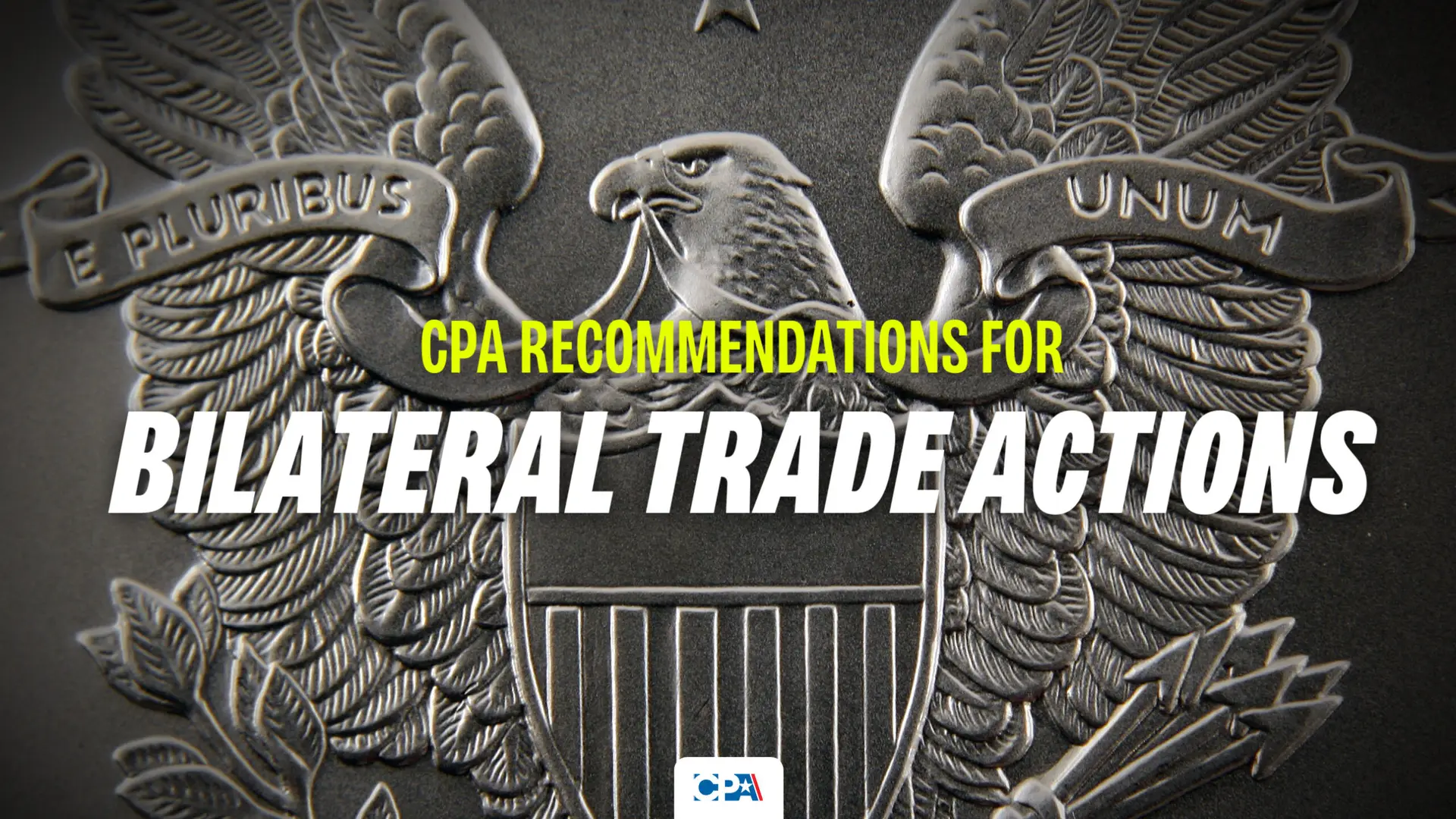President Biden’s long-awaited Executive Order (EO) on outbound investment to China, released Wednesday, August 9, 2023, left much to be desired from CPA’s perspective. As we stated in a press release, the action is merely symbolic. The much-anticipated and years-in-the-making EO did not live up to previously circulated and rumored drafts, nor the proposed legislation floating around Congress, but it was a step toward a policy solution that is sorely needed. This EO must not be seen as a “mission accomplished” document, but rather as an opening salvo for either more developed and robust Congressional action, or further steps by the executive branch.
The EO does not have a timeline
While requiring regularized reporting both to Congress and to the President within a year of the regulations being issued, the EO does not require a timeline or mandate that Treasury issuenew regulations within a certain period of time.
The EO states: “Sec. 4. Reports to the President. Within 1 year of the effective date of the regulations issued under section 1 of this order and, as appropriate but no less than annually thereafter, the Secretary, in coordination with the Secretary of Commerce and in consultation with the heads of other relevant agencies and the Director of the Office of Management and Budget, as appropriate, shall provide the President, through the Assistant to the President for National Security Affairs:”
To remedy this, the EO could be updated to include a timeline for enactment and for the regulatory process to be concluded.
The EO does not include enough sectors
The EO is very narrowly tailored to include only three sectors: semiconductors and microelectronics, quantum information technologies, and artificial intelligence sectors. These sectors are important, but there are others that must be included in any action restricting outbound investment and that have been proposed in numerous iterations of legislative drafts, including some sectors that were rumored to be considered for this EO initially. Other sectors ripe for inclusion include but are not limited to: large capacity batteries; hypersonics; satellite based communications; networked laser scanning systems with dual-use applications; and certain biotech and space related technologies and products.
The EO goes after these sectors only in the context of military, intelligence, surveillance, or cyber-enabled capabilities of a country of concern, not for all intents and purposes, disregarding the known military-civil-fusion (MCF) intentions and operations of the CCP.
Even the EO’s opening / pre-ambulatory paragraphs state the following:
“Moreover, these countries eliminate barriers between civilian and commercial sectors and military and defense industrial sectors, not just through research and development, but also by acquiring and diverting the world’s cutting-edge technologies, for the purposes of achieving military dominance.”
The above statement is correct and it would be more beneficial for the EO to include this in its actionable sections and operational clauses to actually require these sector notification and prohibition regimes to be truly effective in the context of the named countries of concern and taking into account the governance operating principles therein. To not evaluate implications for these sectors broadly, across the board in the countries of concern, but to only take into consideration their implications for military, intelligence, surveillance, and cyber-enabled capabilities is not far-reaching enough to adequately abate the threat, problem, and emergency the EO is declaring and seeking to address.
The EO allows for technologies or products to be added or removed annually, creating a murky landscape of subsections of activities that do not require notifications or prohibitions, causing industry confusion and efficacy doubts
As the EO states, Treasury “… shall assess… whether to adjust the definition… to add or remove technologies and products in the semiconductors and microelectronics, quantum information technologies, and artificial intelligence sectors”. This walks the EO back from being a true sectoral transaction notification or prohibition to being an inconsistent, scattershot operation.
The EO puts Treasury in charge
While the Department of the Treasury is the lead agency in charge of economic and finance policy, including sanctions, the agency is far from the leader on matters of U.S. national security interest. The over-reliance on Treasury and Commerce throughout this EO to execute functions of government in the national security arena is troubling and could be remedied through greater involvement of other Departments and Agencies or establishment of another leadership team within the White House to spearhead this effort through coordination of the Cabinet components on equal levels. As CPA noted in its press release, “Treasury is the agency within the U.S. government that is the most pro-Wall Street.”
The EO states: “To assist in addressing the national emergency declared in this order, the Secretary of the Treasury (Secretary), in consultation with the Secretary of Commerce and, as appropriate, the heads of other relevant executive departments and agencies (agencies).”
The EO only applies to a limited scope of transactions
The language of the EO is very vague as to exactly what covered transactions and entities are subject to this potential new future notification and prohibition regime. To be effective, the EO should explicitly cover all methods of trading of securities — debt and equity, as well as other transactions of private equity, venture capital, and joint ventures to stop outbound capital in its various forms from greenfield investments and FDI to ETFs and Mutual Funds.
The EO creates a two-tiered system of notifications and prohibitions with unclear distinctions as to why certain behavior is acceptable to be in the notification-only regime
The EO outlines a national emergency, yet gives latitude for Treasury to not actually prohibit swaths of the activities it says are an emergency to address. This must be clarified through more clear policy guidelines and directly prohibiting transactions on a consistent basis.
The EO states:
“(b) The regulations issued under this section shall identify categories of notifiable transactions that involve covered national security technologies and products that the Secretary, in consultation with the Secretary of Commerce and, as appropriate, the heads of other relevant agencies, determines may contribute to the threat to the national security of the United States identified in this order. The regulations shall require United States persons to notify the Department of the Treasury of each such transaction and include relevant information on the transaction in each such notification.
(c) The regulations issued under this section shall identify categories of prohibited transactions that involve covered national security technologies and products that the Secretary, in consultation with the Secretary of Commerce and, as appropriate, the heads of other relevant agencies, determines pose a particularly acute national security threat because of their potential to significantly advance the military, intelligence, surveillance, or cyber-enabled capabilities of countries of concern. The regulations shall prohibit United States persons from engaging, directly or indirectly, in such transactions.”












